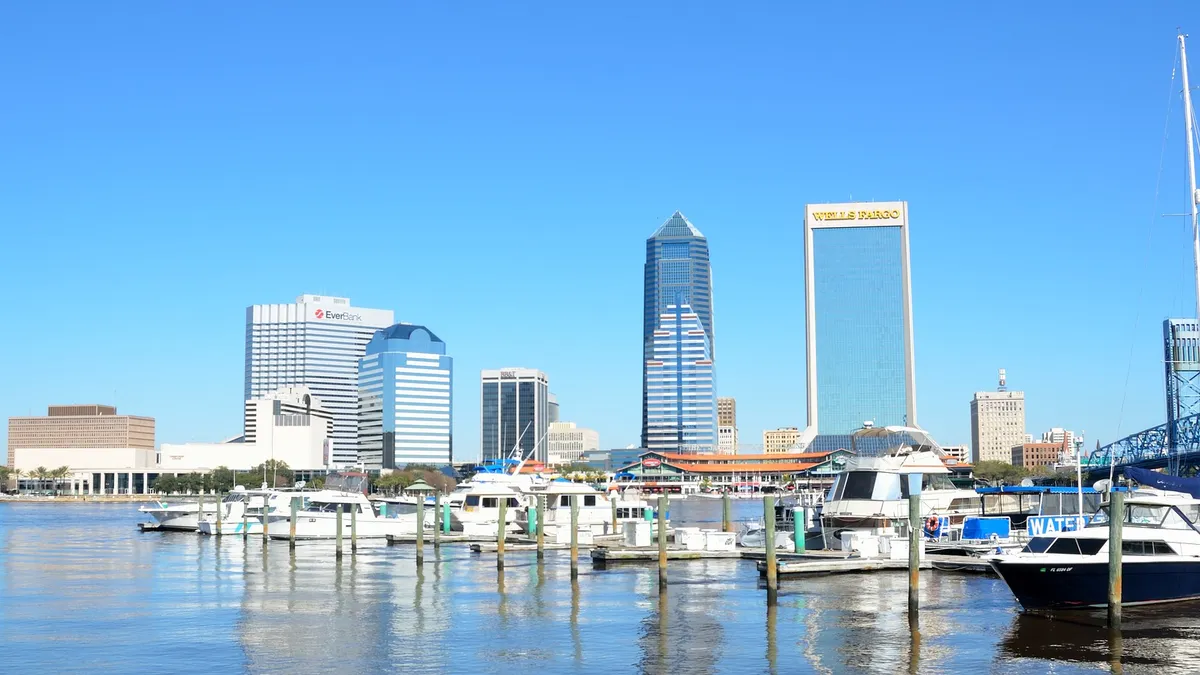Dive Brief:
- Florida's new Public Financing of Construction law requires contractors on publicly funded coastal projects to study how those projects could be impacted by sea level rise before starting work.
- The state's Department of Environmental Protection (DEP) has yet to establish a rule standard for the study, as the new law requires. However, beginning one year after it does so, contractors will not be permitted to start construction on a "major structure or nonhabitable major structure" within a coastal building zone unless they conduct a sea level impact projection (SLIP) study and submit it to the DEP.
- If contractors fail to do a SLIP, the state can halt the project, or, for those that have completed work, seek reimbursement for part or all of the public funds that were spent.
Dive Insight:
The movement of goods around the world relies heavily on oceanfront ports, which could experience greater disruption due to more regular flooding as sea levels rise.
The Florida DEP's rule will use a "systematic, interdisciplinary and scientifically accepted approach" and assess flooding, inundation and wave-action damage risks over the proposed structure's expected life or 50 years, whichever is less. The assessment must take into account, among other things:
- Potential local sea level rise and increased storm risk during the expected life of the structure or 50 years, whichever is less.
- The mean average annual chance of substantial flood damage over the expected life of the structure or 50 years, whichever is less.
- Design and site alternatives and the risks associated with each.
An analysis included in the bill, which was signed into law earlier this month by Gov. Ron DeSantis, shows that according to two studies, sea level rise by 2100 will be between 2.6 feet and 6.8 feet in Southeast Florida and between 2 feet and 8.5 feet in the Tampa Bay region. The Florida sea rise estimates are significantly higher than the expected global increases of between 1 foot and 4.3 feet.
The analysis also said that 76% of the state's population lives in its 35 coastal counties and that just 1 foot of sea level rise would threaten 65,000 homes, $300 billion worth of property value and almost 122,000 people.
Miami-Dade County has a policy that establishes guidelines for considering sea level rise during capital planning, as do other susceptible areas of the country including San Francisco; Palo Alto, California; and Virginia Beach, Virginia.
Many ocean-front businesses in Florida and other coastal states are already planning for sea level rise. In its latest master plan, approved in 2012, the Port of Miami said sea level rise was one of the "biggest concerns involving the future of the Port of Miami."
"The Port must also consider future project modifications that may reduce or eliminate the adverse impacts from sea level rise and evaluate the structural integrity of structures near the ocean that are subject to potential hazards caused by sea level rise," the port said in its master plan.
Ocean-front ports across the country have taken the step of analyzing their impact when it comes to sea level rise. In a master plan released last year, The Port Authority of New York and New Jersey said the threat from sea level rise was "imminent" and that the agency needed to "proactively develop protection strategies for its critical assets."
The Port of Virginia has also taken the step of raising and moving away from the water its electricity and data infrastructure.















